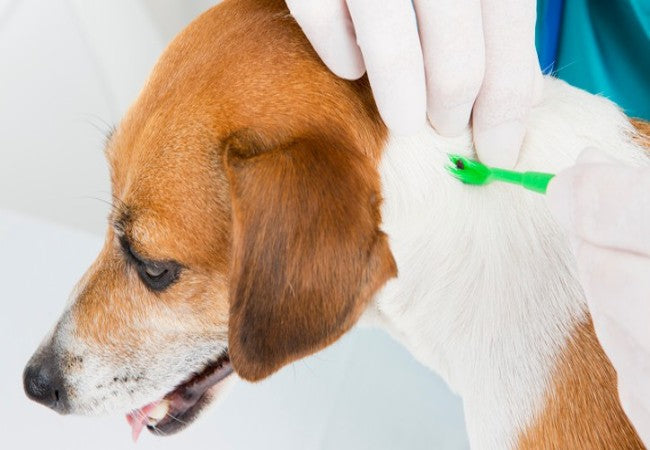Vet’s 2025 Guide to Lyme Disease in Dogs 🩺🐾

In this article
🩺 Vet’s 2025 Guide to Lyme Disease in Dogs 🐾
By Dr. Duncan Houston BVSc
Lyme disease is a tick-transmitted bacterial infection caused by Borrelia burgdorferi. While many exposed dogs remain asymptomatic, approximately 5–10% develop illness, typically arthritis or fever. In rare cases, kidney complications occur. This complete 2025 guide covers causes, clinical signs, diagnosis, effective treatment, prevention, and long-term care strategies to support your dog’s well-being.
1️⃣ . How Dogs Get Lyme Disease
- Carried by black-legged (“deer”) ticks (Ixodes scapularis in the East/Midwest, pacificus on West Coast).
- The tick must be attached for 24–48 hours to transmit the bacteria.
- Ticks feed on rodents/deer, infection is passed during blood meals.
2️⃣ Which Dogs Are at Risk?
- Dogs in endemic regions (Northeast, Midwest, Pacific Coast).
- Outdoor dogs—hikers, hunters, or yard lovers; even backyards can harbor ticks.
- Year-round exposure risk—spring through fall and beyond.
3️⃣ Signs & Symptoms to Watch For
- Intermittent, shifting lameness or joint swelling.
- Fever, lethargy, reduced appetite.
- Swollen lymph nodes and discomfort on touch.
- Less common: Lyme nephritis—kidney disease signs like vomiting, weight loss, and edema.
- Signs usually appear 2–5 months after infection.
4️⃣ Diagnosing Lyme Disease
- Screening tests: SNAP 4Dx detects antibodies; a positive result ≠ disease.
- Confirmatory testing: Quant C6 titers, PCR, or ELISA for accuracy.
- Assess organs: Blood/urine tests check kidney function, proteinuria.
- Therapeutic response: Rapid improvement on doxycycline supports diagnosis.
5️⃣ Treatment Protocols
- Doxycycline: 4-week oral course; improvement often within 3–5 days.
- Alternative antibiotics: Amoxicillin or azithromycin if doxy isn’t tolerated.
- Kidney-focused cases: Extended antibiotics plus renal support if Lyme nephritis is present.
6️⃣ Monitoring & Prognosis
- Joint signs typically resolve; some dogs may develop arthritis requiring management.
- Kidney outcomes vary—nephritis requires intensive ongoing care.
- Regular follow-up exams, bloodwork, and urine checks are recommended within 4–6 weeks of treatment.
7️⃣ Prevention Strategies
- Tick prevention: Year-round repellents (spots, chews, collars).
- Tick checks: Inspect after any outdoor exposure, especially in spring through fall.
- Environmental control: Clear brush, mow lawns, create tick-free zones.
- Vaccination: In endemic areas, two-dose series plus an annual booster may reduce infection risk.
- Avoidance: Steer clear of tall grass, woods, and brush during peak tick activity.
8️⃣ Supportive Care & Enrichment
- Provide joint supplements like glucosamine and omega‑3s for arthritis relief.
- Use Ask A Vet telehealth for monitoring treatment progress and medication compliance.
- Maintain an ideal weight to reduce joint strain and support overall health.
9️⃣ When to Call Your Vet
- New or recurring lameness or joint swelling.
- Persistent fever, loss of appetite, or sudden lethargy.
- Signs of kidney problems—vomiting, frequent urination, increased thirst or swelling.
- Positive Lyme test with protein in the urine—even without visible symptoms.
🔟 Final Thoughts
Lyme disease is common but treatable. With early detection, accurate testing, targeted antibiotic therapy, and strong prevention methods, most dogs fully recover. Use telehealth support, joint supplements, and enrichment to support your pup’s health in 2025 and beyond. 🐕🦺💚
Have questions about testing, treatment duration, or prevention plans? Visit AskAVet.com and download the Ask A Vet app for expert veterinary guidance anytime. 📱






